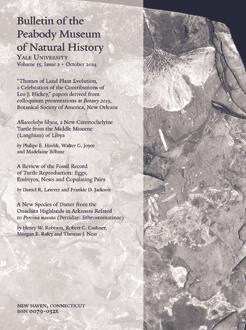The fossil record of turtle reproduction (e.g., eggs, embryos, nests and copulating pairs) is relatively poor compared with that of dinosaurs. This record extends from the Middle Jurassic to the Pleistocene, and specimens are known from every continent except Antarctica. Fossil turtle eggs are recognized as body fossils, and confident taxonomic identification at the genus or species level is dependent on embryos preserved within fossil eggs or by eggs found within a gravid female. Cladistic analysis of egg and eggshell characters demonstrates a high degree of homoplasy, and only a few characters provide a strong phylogenetic signal. Taphonomic studies of fossil turtle eggs are rare but can elucidate size and number of eggs produced by extinct taxa. Pathological fossil turtle eggs are known from a few localities and provide information about physiological or environmental stresses experienced by the gravid female. Fossil turtle eggs are relatively abundant in Asia, Europe and North America but are poorly represented in Gondwana. An ootaxonomic review of fossil turtle eggs shows that of 15 named ootaxa, 8 are nomina valida, 5 are nomen nudum and 2 are junior synonyms of other ootaxa.
How to translate text using browser tools
1 October 2014
A Review of the Fossil Record of Turtle Reproduction: Eggs, Embryos, Nests and Copulating Pairs
Daniel R. Lawver,
Frankie D. Jackson
ACCESS THE FULL ARTICLE
paleoology
Testudines
Testudoflexoolithidae
Testudoolithidae





